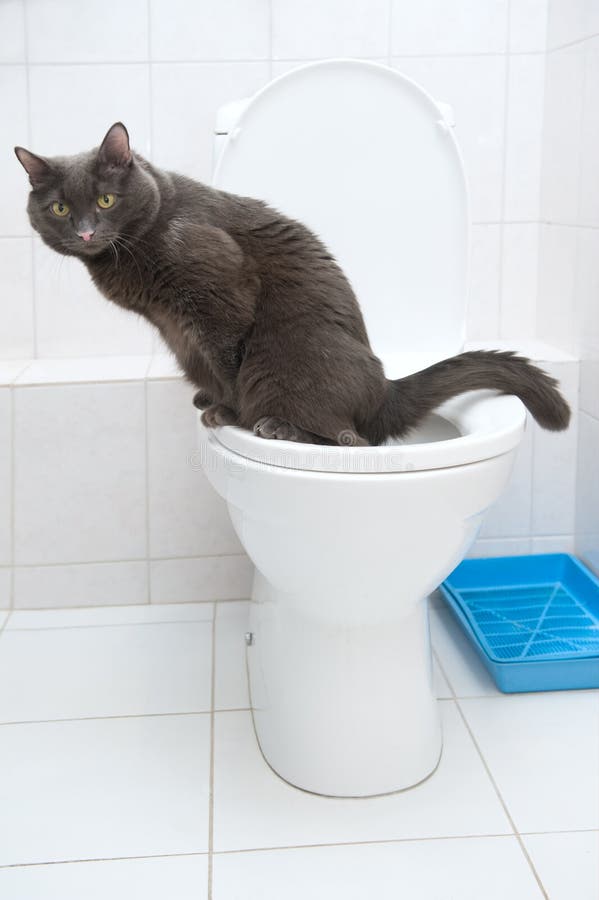The Dangers of Flushing Cat Poop Down Your Toilet - Advice for Safer Disposal
The Dangers of Flushing Cat Poop Down Your Toilet - Advice for Safer Disposal
Blog Article
In this article down the page you'll find additional professional answers about Don’t flush cat feces down the toilet.

Introduction
As cat proprietors, it's essential to bear in mind exactly how we take care of our feline close friends' waste. While it might appear hassle-free to flush pet cat poop down the toilet, this technique can have detrimental repercussions for both the atmosphere and human health.
Environmental Impact
Purging pet cat poop introduces unsafe microorganisms and bloodsuckers into the supply of water, posturing a significant risk to aquatic ecosystems. These impurities can adversely influence aquatic life and compromise water high quality.
Health and wellness Risks
In addition to ecological worries, purging pet cat waste can also pose health dangers to people. Cat feces might have Toxoplasma gondii, a parasite that can create toxoplasmosis-- a possibly serious health problem, particularly for pregnant ladies and people with weakened body immune systems.
Alternatives to Flushing
Thankfully, there are much safer and a lot more responsible means to deal with pet cat poop. Consider the following options:
1. Scoop and Dispose in Trash
The most usual approach of throwing away pet cat poop is to scoop it into an eco-friendly bag and toss it in the garbage. Make sure to utilize a devoted clutter inside story and get rid of the waste immediately.
2. Use Biodegradable Litter
Go with naturally degradable feline clutter made from products such as corn or wheat. These trashes are environmentally friendly and can be safely dealt with in the trash.
3. Bury in the Yard
If you have a backyard, think about burying cat waste in a marked location far from vegetable yards and water sources. Be sure to dig deep enough to prevent contamination of groundwater.
4. Mount a Pet Waste Disposal System
Purchase a pet garbage disposal system especially designed for cat waste. These systems make use of enzymes to break down the waste, lowering smell and environmental impact.
Verdict
Liable family pet possession expands past offering food and sanctuary-- it also involves proper waste administration. By avoiding flushing feline poop down the toilet and opting for alternate disposal approaches, we can lessen our environmental impact and safeguard human wellness.
Why Can’t I Flush Cat Poop?
It Spreads a Parasite
Cats are frequently infected with a parasite called toxoplasma gondii. The parasite causes an infection called toxoplasmosis. It is usually harmless to cats. The parasite only uses cat poop as a host for its eggs. Otherwise, the cat’s immune system usually keeps the infection at low enough levels to maintain its own health. But it does not stop the develop of eggs. These eggs are tiny and surprisingly tough. They may survive for a year before they begin to grow. But that’s the problem.
Our wastewater system is not designed to deal with toxoplasmosis eggs. Instead, most eggs will flush from your toilet into sewers and wastewater management plants. After the sewage is treated for many other harmful things in it, it is typically released into local rivers, lakes, or oceans. Here, the toxoplasmosis eggs can find new hosts, including starfish, crabs, otters, and many other wildlife. For many, this is a significant risk to their health. Toxoplasmosis can also end up infecting water sources that are important for agriculture, which means our deer, pigs, and sheep can get infected too.
Is There Risk to Humans?
There can be a risk to human life from flushing cat poop down the toilet. If you do so, the parasites from your cat’s poop can end up in shellfish, game animals, or livestock. If this meat is then served raw or undercooked, the people who eat it can get sick.
In fact, according to the CDC, 40 million people in the United States are infected with toxoplasma gondii. They get it from exposure to infected seafood, or from some kind of cat poop contamination, like drinking from a stream that is contaminated or touching anything that has come into contact with cat poop. That includes just cleaning a cat litter box.
Most people who get infected with these parasites will not develop any symptoms. However, for pregnant women or for those with compromised immune systems, the parasite can cause severe health problems.
How to Handle Cat Poop
The best way to handle cat poop is actually to clean the box more often. The eggs that the parasite sheds will not become active until one to five days after the cat poops. That means that if you clean daily, you’re much less likely to come into direct contact with infectious eggs.
That said, always dispose of cat poop in the garbage and not down the toilet. Wash your hands before and after you clean the litter box, and bring the bag of poop right outside to your garbage bins.
https://trenchlesssolutionsusa.com/why-cant-i-flush-cat-poop/
:max_bytes(150000):strip_icc()/0S1A1090-49a8e2c66f8e41d6901f2559787a7f24.jpg)
I am just very interested in Can You Flush Cat Poop Down The Toilet? and I hope you appreciated the entire article. Don't hesitate to set aside a second to share this entry if you enjoyed it. I value reading our article about Can You Flush Cat Poo or Litter Down the Toilet?.
Call Today Report this page